An ancient human culture, the Tionese first appeared indirectly in Brian Daley’s Han Solo and the Lost Legacy. The Tionese inhabit the Tion Cluster, in the Outer Rim just north of Mon Calamari Space. Aside from mentions in Geonosis and the Outer Rim Worlds and The New Essential Chronology, the Tionese were mostly forgotten by the EU at large until 2009, with the publication of the Essential Atlas. The Atlas greatly expanded on Tionese history, particularly the conquests of Xim. Further work was done on the Tionese during “Xim Week”- particularly Jason Fry’s The History of Xim and the Tion Cluster– and John Hazlett’s The Written Word.
It’s All Tionese to Me
Much like the Latin Alphabet, the Greek Alphabet has been canonized within the GFFA, this time as the written language of the Tionese. According to The Written Word, the Tionese language was devised as an administrative tool by Jansari (A powerful group within the Livien League of the northwestern Tion Cluster). While it has been largely superseded by Aurebesh (and to a lesser extent in recent times, by High Galactic), the Tionese language remains in use in the Tion Cluster- most notably by several starship companies. Cygnus Starworks (Cygnus, the Latin word for ‘swan’, comes from the Greek ‘cycnus’, which refers to several characters in Greek mythology who were transformed into swans) produced various spacecraft in cooperation with the famous Sienar Fleet Systems for the Galactic Republic and Galactic Empire- spacecraft whose designations rather conspicuously utilize Greek letters, such as the Lambda-class shuttle piloted by Han Solo in Return of the Jedi, or the Theta-class shuttle which Palpatine utilized as a hyperspace-capable ambulance in Revenge of the Sith. Sienar Fleet Systems was headquartered on Lianna in the Tion Cluster, while Cygnus Starworks was based in the nearby Cygnus Star Empire. The Tionese alphabet was also utilized by various militaries in the GFFA—Delta and Omega Squads from the Republic Commando series bear such designations, and Luke Skywalker orders Rogue Squadron to adopt Attack Pattern Delta during the Battle of Hoth.
A Divided Tion
After the decline of the Rakata, the human culture that came to inhabit the Tion Cluster repurposed old Rakatan technology to develop the hyperdrive independently of the Republic. The Tionese formed a cacophony of independent states within the Tion Cluster, constantly warring and allying with each other without any one faction gaining dominance over the rest. While the Tionese shared elements of a unified culture, the Tionese did not unify into one state of their own. Multiple alliances existed between independent Tionese states- the Livien League, the Kingdom of Cron, the Ihala Spiral, and the Three Allied Kingdoms. The political state of the Tion pre-Xim greatly resembles classical Greece. While all sorts of intercity alliances were formed (such as the Delian League and the Peloponnesian League), and some states even gained the upper hand in a region for a time (for example, Athens gaining control over much of the Aegean), no one Greek city-state gained complete control over Hellas.
Xim the Despot: Alexander’s Less-Successful Fanboy
First mentioned in the 1979 Han Solo and the Lost Legacy, Xim languished in the dustbin of the EU until the mid-2000s, when the New Essential Chronology and Xim Week greatly expanded upon his career. As a result, Xim the Despot has come to resemble a less successful Alexander the Great. Xim’s career owed much to the exploits of his father, Xer VII, whose conquests in the northern Tion provided a base of power from which Xim could conduct his raids and subjugations throughout the Tion. Xer conquered much of the Tion Cluster proper, and upon his death was succeeded by Xim, who finished what Xer had started and expanded beyond the borders of the Cluster. At its height, Xim’s Empire extended from the Radama Void to Kessel, and attempted to push into the Hutt Empire, that early bogeyman of humankind in the GFFA. Xim’s diplomacy and tactics were ruthless, yet he met his match in the form of the Hutts, led by Kossak the Great. After a series of three ritual battles over Vontor, Xim was thoroughly defeated by Kossak; accounts differ as to whether he died at Vontor or rotted in Kossak’s dungeons. Xim is described in some sources as egotistic, even megalomaniacal, with his vision of a large empire outstripping the practicalities that the resources at hand lent him.  Xim’s career resembles that of Alexander, had Alexander been crushed repeatedly at the Battle of Issus by Darius III of Persia. Like Alexander before him, Xim owed his initial powerbase to his father, who died under suspicious circumstances—regardless of whether or not Alexander’s mother actually poisoned Philip II, the rumors surfaced nonetheless, and no doubt helped to inspire Xim’s mother/wife, Queen Indrexu. Both Alexander and Xim, after unifying their normally fractious cultures (who in fact regarded them initially as barbarian foreigners), made war upon their cultural bogeymen, be they the Hutts or the Persians. Xim’s story differs in the conclusion—Alexander crushes the Persians and goes on to carve out a massive empire, while Xim’s momentum comes to a wrenching halt in orbit above Vontor. The empires formed by both figures fell apart upon their deaths- Xim’s conquests were gobbled up by the Hutts or simply broke off from his Tionese Empire, while Alexander’s generals (often called the Diadochi) scrambled to carve out the corners of his empire as their own personal kingdoms.
Xim’s career resembles that of Alexander, had Alexander been crushed repeatedly at the Battle of Issus by Darius III of Persia. Like Alexander before him, Xim owed his initial powerbase to his father, who died under suspicious circumstances—regardless of whether or not Alexander’s mother actually poisoned Philip II, the rumors surfaced nonetheless, and no doubt helped to inspire Xim’s mother/wife, Queen Indrexu. Both Alexander and Xim, after unifying their normally fractious cultures (who in fact regarded them initially as barbarian foreigners), made war upon their cultural bogeymen, be they the Hutts or the Persians. Xim’s story differs in the conclusion—Alexander crushes the Persians and goes on to carve out a massive empire, while Xim’s momentum comes to a wrenching halt in orbit above Vontor. The empires formed by both figures fell apart upon their deaths- Xim’s conquests were gobbled up by the Hutts or simply broke off from his Tionese Empire, while Alexander’s generals (often called the Diadochi) scrambled to carve out the corners of his empire as their own personal kingdoms.
War with the Republic, Galactic and Roman
After the fall of Xim, the Tion Hegemony returned to its previous fractious state. Xim’s outlying conquests were conquered, declared independence, isolated, or sterilized by the Hutts. Circa 24000 BBY, scouts from the Tion encountered traders from the fledgling Republic- among whose member cultures several regarded the Tionese as their cultural antecedents. Sensing an opportunity to expand, the Tionese formed the Honorable Union of Desevro and Tion and invaded the nascent Republic along the Perlemian Trade Route, 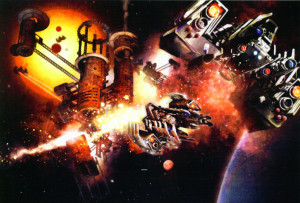 fission-bombing multiple Republic colonies. While the war initially went in favor of the Tionese, the Republic rallied, constructing its first real navy and enlisting the aid of the Jedi Order. The Republic then took the war to the Tion Cluster, devastating multiple worlds and bombarding Desevro. The Tionese War resembles the Macedonian Wars, conducted from 190-146 BCE by the Roman Republic against the Antigonids, rulers of Macedonia. Like the Republic—particularly the planet Alsakan– the Romans viewed the Greeks as their cultural forbearers, even as they went to war with them (the Roman Republic pushed the narrative that they were ‘liberating’ the Greeks from the ‘tyranny’ of the Antigonids). The onus for starting the war differs- the Tionese outright invaded Republic Space, whereas the Romans engineered a cause for war in order to invade Greece. As I mentioned in “Senatus Populusque Res Publica Galactica”, the devastation of Desevro at the end of the war echoes the sack of Corinth at the end of the Third Macedonian War- a war fought against a recently-formed league of Greek States meant to drive the Romans from Greece. Like the Tionese, the Greek were incorporated into the Roman Republic after the Macedonian Wars, as the provinces of Macedonia, Graecia, Thracia, and Achaea.
fission-bombing multiple Republic colonies. While the war initially went in favor of the Tionese, the Republic rallied, constructing its first real navy and enlisting the aid of the Jedi Order. The Republic then took the war to the Tion Cluster, devastating multiple worlds and bombarding Desevro. The Tionese War resembles the Macedonian Wars, conducted from 190-146 BCE by the Roman Republic against the Antigonids, rulers of Macedonia. Like the Republic—particularly the planet Alsakan– the Romans viewed the Greeks as their cultural forbearers, even as they went to war with them (the Roman Republic pushed the narrative that they were ‘liberating’ the Greeks from the ‘tyranny’ of the Antigonids). The onus for starting the war differs- the Tionese outright invaded Republic Space, whereas the Romans engineered a cause for war in order to invade Greece. As I mentioned in “Senatus Populusque Res Publica Galactica”, the devastation of Desevro at the end of the war echoes the sack of Corinth at the end of the Third Macedonian War- a war fought against a recently-formed league of Greek States meant to drive the Romans from Greece. Like the Tionese, the Greek were incorporated into the Roman Republic after the Macedonian Wars, as the provinces of Macedonia, Graecia, Thracia, and Achaea.
Decline post-Tionese Wars
Following the defeat of Xim, the Hutt expansion into former Xim-controlled territories, and the Republic conquest of the Tion Hegemony, the Tion gradually became a backwater on the Outer Rim. The momentum of expansion fell to the Republic, and that expansion for the most part was directed away from the Tionese, into the Slice and the Northern Territories. The Tion Cluster did experience a brief resurgence during the Clone Wars. Count Dooku announced the formation of the Separatist movement from the surface of Raxus Prime, and the Tion supported the CIS during the Clone Wars, even hosting the Separatist Council for a time on Raxus. After the war, the Empire further divided the Tion into several sectors in order to prevent the formation of any potential power blocs in the region. They need not have worried, as by this point in time the glories of the Tion lay far in the distant past. Xim and the Tion describes the worlds of the Tion circa-GCW as almost uniformly backwater worlds who cling to notions of past glory while being home to little more than subsistence farmers and tourist attractions- the Tion has become the statue of Ozymandias in the eponymous poem. Like the Tion Cluster, Greece and Macedonia were divided into several provinces by the Roman Empire. After the death of Alexander, the momentum of expansion in the Mediterranean and Mesopotamia shifted away from Greece itself. In the East, the Seleucid Empire (founded by one of Alexander’s generals and encompassing much of the old Persian Empire’s territory) and the rest of Alexander’s successor states fought over the remnants of his empire, while the Antigonids of Greece tried their best to simply hold onto Greece. In the Mediterranean, Rome’s star waxed as Greek power waned- first with the Romans taking the Greek colonies in southern Italy and Sicily, and then with the Macedonian Wars. While it didn’t exactly suffer under the Roman Empire, and indeed the Eastern Roman Empire later used Greece as its base of power, the Hellenes cannot be described as the masters of the Mediterranean during the era of Roman dominance.
Tune in next time, as Tyler explores the Vikings, the Mongols, and the Celts, and how they all exerted an influence upon those lovable, overrated psychopathic mercenaries, the Mandalorians.

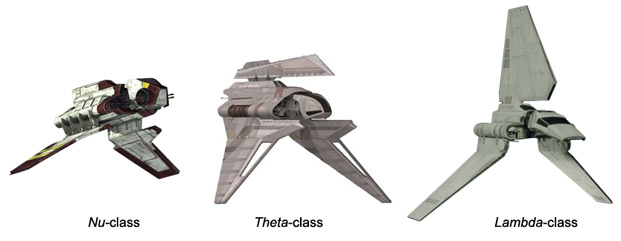
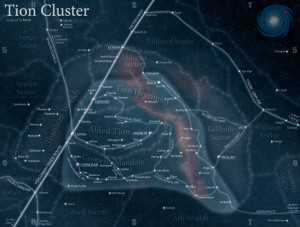
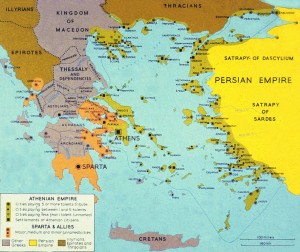
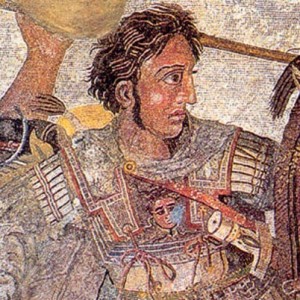
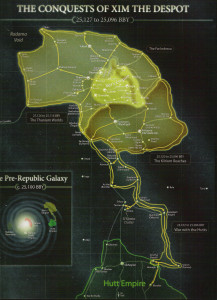

Fantastic article, Tyler! Really top notch stuff. As a lover of history, I really enjoy reading articles that draw parallels between the GFFA and the real world. The Tionese worlds really do deserve more exploring in the “modern” GFFA. Last we heard of them, they were NR/GA members with senatorial representatives that favored continuing the war against the Vong.
Thanks Nick. It would definitely be interesting to see how they fared post-Vong War. The Vong themselves barely paid the Tion any attention during the war (I guess one’s glory days being 25000 years gone does have some benefits), yet with the Alpha Red test on Caluula going haywire, the current state of the Cluster is anyone’s guess.
The Cluster is begging for some short stories starring Corellia Antilles. Begging. Jason Fry even worked her into the Xim and the Tion article.
Everywhere is begging for Corellia Antilles short stories. But the Tion would be especially great. I’d love some treasure-hunting stories that could be excuses to give us more history — maybe even a dual narrative featuring flashbacks to Xim’s day.
Question for the cunning linguists among us: tie-on or tea-on?
I always pronounce it Tea-on, for what it’s worth.
Ditto. But I have to admit “tie-on” feels more…archaic?
I say Tea-on.
Tea-on.
Tea-on feels more in like with how the letter “I” tends to be pronounced in Latin; what we usually look at as a long “I” sound in English is often formed by “ae” in Latin. However, seeing as these guys are Space Hellenes, and I have virtually no knowledge of Attic Greek, I’ll defer to Jay.
Lucas- what would make further Corellia Antilles adventures even better is how well-suited the Tion is to small-scale adventures. The Tion’s glory days are long past, and the authors who would likely write such a story- Luceno, Fry, or some of the TOS short story authors (Slave Pits of Lorrd comes to mind)- would know how to exercise restraint and tell a good story while making good use of the history of the Tion. Indiana Jones in space fantasy NEEDS TO HAPPEN ALREADY, IT WAS PASSED UP ONCE DURING THE CORELLIAN TRILOGY.
Plus, strong female lead.
Just saw this — the Attic iota is pronounced exactly the same way as the Latin i. If Tion were a Greek word, it would be Τιων (by necessity a third declension neuter, because if it were second declension it would lead to an unpronounceable mess of vowels in the oblique cases). The omega is a long omicron, which would be pronounced as an omicron held longer in classical Athens, or simply an English long o in the modern pronunciation. The iota is clearly long. So it’s not quite “Tea-on” but close to it: the long iota is a bit more like a long French i than a long English e (as in Latin), with the omega pronounced like the -aw in saw. So a bit more like Tea-awn than Tea-on.
In English, I think it’s pretty unambiguously Tea-on. Tie-on sounds rather rustic.